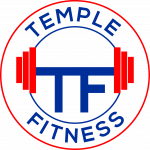How To
Assisted Pullups & Dips
Instructions
Pullups
Machine-assisted pull-ups are a practical alternative to regular pull-ups, especially for beginners. The motion is the same as regular pull-ups: you hang from a bar and pull your body up, focusing on your back muscles (latissimus dorsi).
The key difference is that machine-assisted pull-ups provide support by pushing you upward with a counterweight. Instead of your legs hanging freely, you kneel on a leg rest that pushes your body up. You can adjust the weight to provide the amount of support you need.
Often, beginners struggle with regular pull-ups because they lack the strength for proper execution. In these cases, it’s normal to struggle with completing clean repetitions. To prepare for unassisted pull-ups, try other upper back exercises as an alternative, like seated machine rows, cable rows, or cable lat pulldowns.
Correct Execution – Pullups
Performing assisted pull-ups correctly depends on choosing the right weight. A heavier weight on the machine makes the exercise easier, so it’s essential to find the “sweet spot” that still challenges you despite the assistance.
This machine doubles as a dip machine, allowing you to perform dips with weight assistance using side handles. See below for how to dips.
- Set the weight that will ease the load on your back. For example, if you choose 20 kg, you’ll effectively be 20 kg lighter because of the counterweight.
- Step onto the footboards and grab the pull-up handles slightly wider than shoulder-width in an overhand grip (back of your hand facing you).
- Place your knees on the pad provided. Start by placing one knee on the pad and pushing it down a bit, then place the second knee on the pad. Keep your hands securely on the handles at all times. Now you’re in the starting position on the pull-up machine.
- Maintain body tension and pull yourself up. The counterweight can only support your pull-up if you stay tense. If the pull-up is too easy, step off the machine and reduce the weight. If you can’t complete a clean pull-up despite the counterweight, increase the weight.
Dips: Basics and alternatives
Dips are a key exercise in bodybuilding and rank among the most popular chest exercises. That’s why you’ll find dip bars or dip machines in almost every gym. In this exercise, you support your body with your arms, lower it, and then raise it again. The main muscles worked are the pectoral muscles, triceps, and anterior shoulder.
Sometimes called bar dips, you lean on two bars and dip your body down.
Since dips involve safely moving your body weight through your chest and triceps, they’re not ideal for beginners.
However, we have the assisted dip machine to help you safely get started.
Correct execution
Proper form is crucial to avoid unnecessary stress on the shoulder joints. Performing dips with the upper body completely upright puts more stress on the shoulders. Leaning your upper body forward at an appropriate angle reduces joint stress. Dips are similar to a steep negative bench press in this regard, as the movement sequence is quite similar despite different postures.
Just like with the bench press, ensure your elbows aren’t spread too far from your body. Your shoulder blades should be tucked in. Also, the dip bars shouldn’t be too wide. As a rule of thumb, each side should be about 10cm wider than your hips.
- Stand between the dip bars. Many bars aren’t parallel but angled. Stand between the bars until the distance to your hips is reduced to the mentioned point (see above). You can adjust freestanding dip bars accordingly.
- Grab the bars with your hands, pull your shoulder blades back and push your chest out.
- Lift your body off the ground by extending your triceps.
- Bend your legs at the knees.
- Tilt your upper body forward slightly.
- Lower your torso evenly downward by bending your arms. Stop the downward movement when your elbows are bent to 90 degrees.
- Push your body back up through your chest by extending your arms. Keep your arms slightly bent at the end of the movement to avoid stressing your elbow joints.
Common mistakes and injuries
Shoulder injuries are a potential long-lasting complication, giving dips a somewhat bad reputation. Thus, it’s vital to pay close attention to proper form and listen to your body while performing the exercise.
Be mindful of the following points:
- Tilt your torso forward slightly as you lower it.
- Don’t spread your elbows too far.
- Don’t lower your body too much. Your elbows should be bent about 90 degrees (between your upper and lower arm) at the end of the movement. Going down too low can release the tension on your shoulder blades, pushing your shoulders forward and increasing joint stress.
- Don’t add weight until you can confidently perform dips without additional weight. Start low and increase the weight gradually. Most injuries occur with added weight. If in doubt, increase the number of repetitions without adding extra weight to the belt.
- Do not perform dips if you have had a previous shoulder injury or are currently experiencing shoulder pain. In such cases, switch to exercises where the training weight can optionally be below your body weight. This is the best way to ensure the weight isn’t too heavy.
